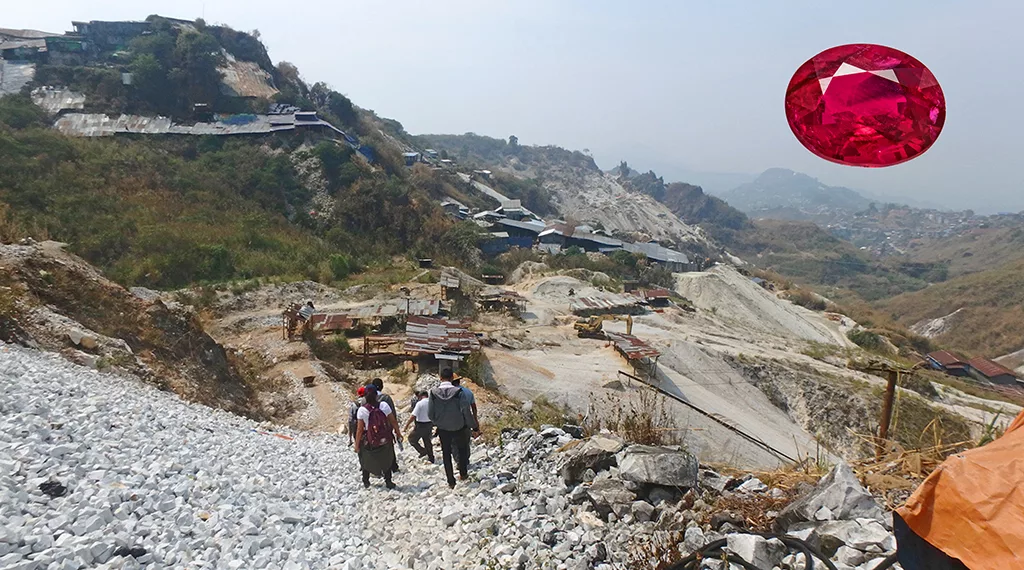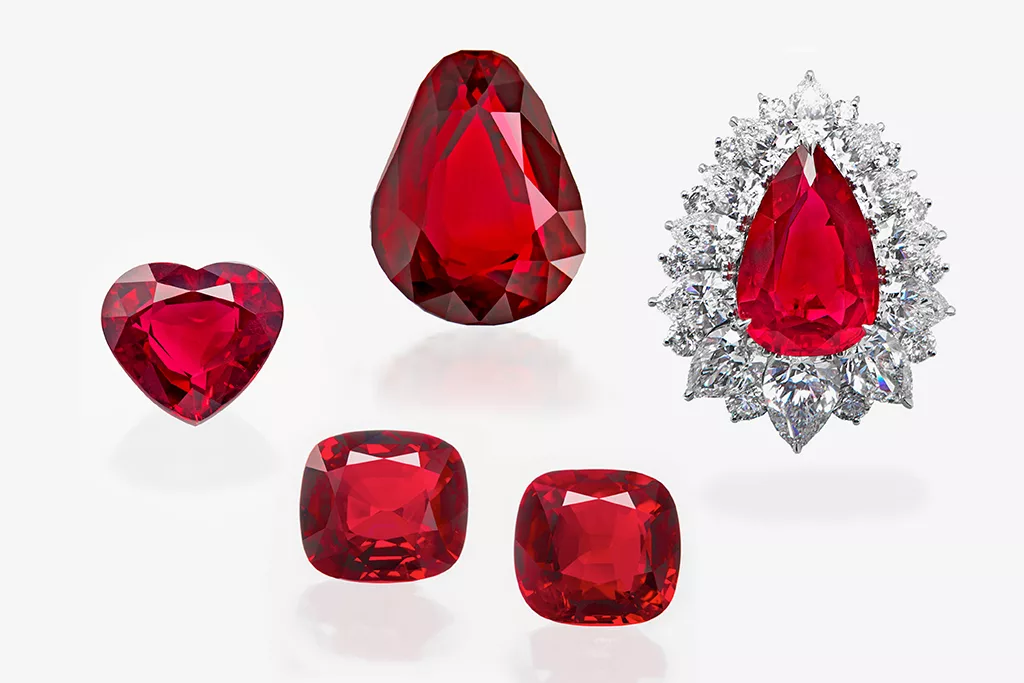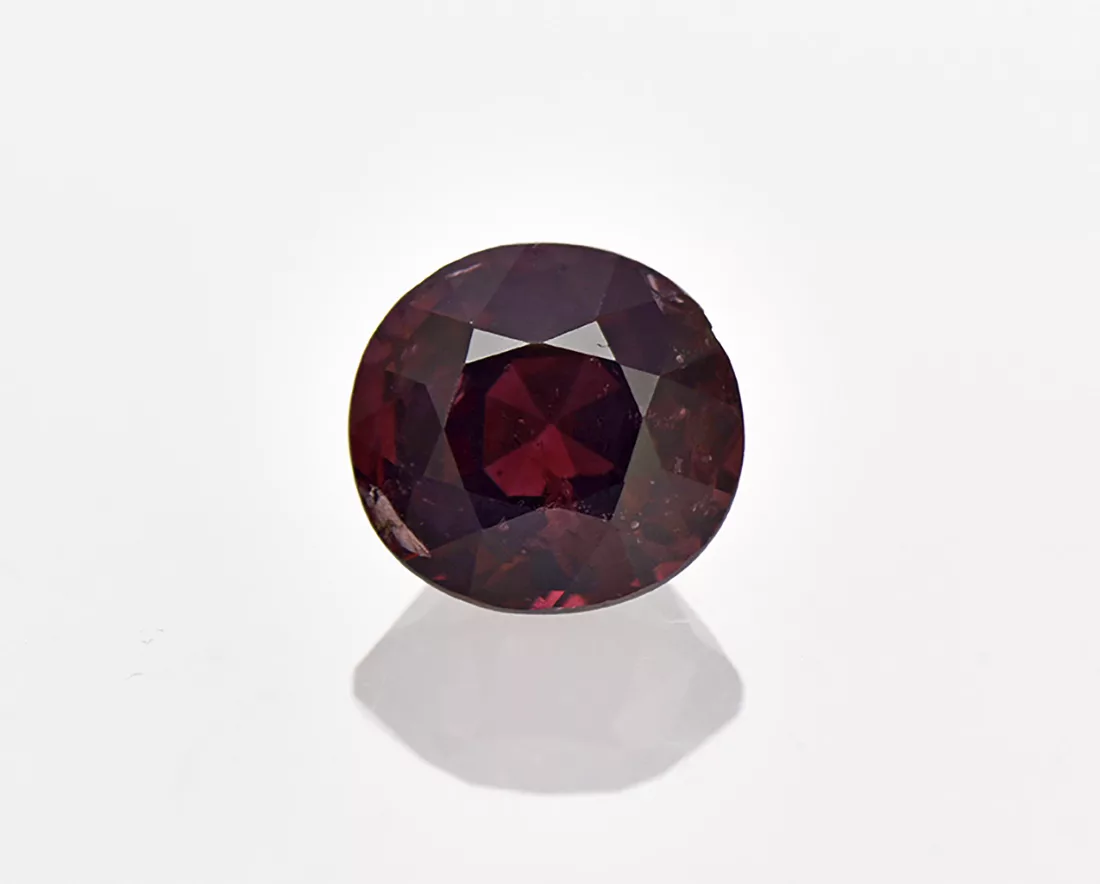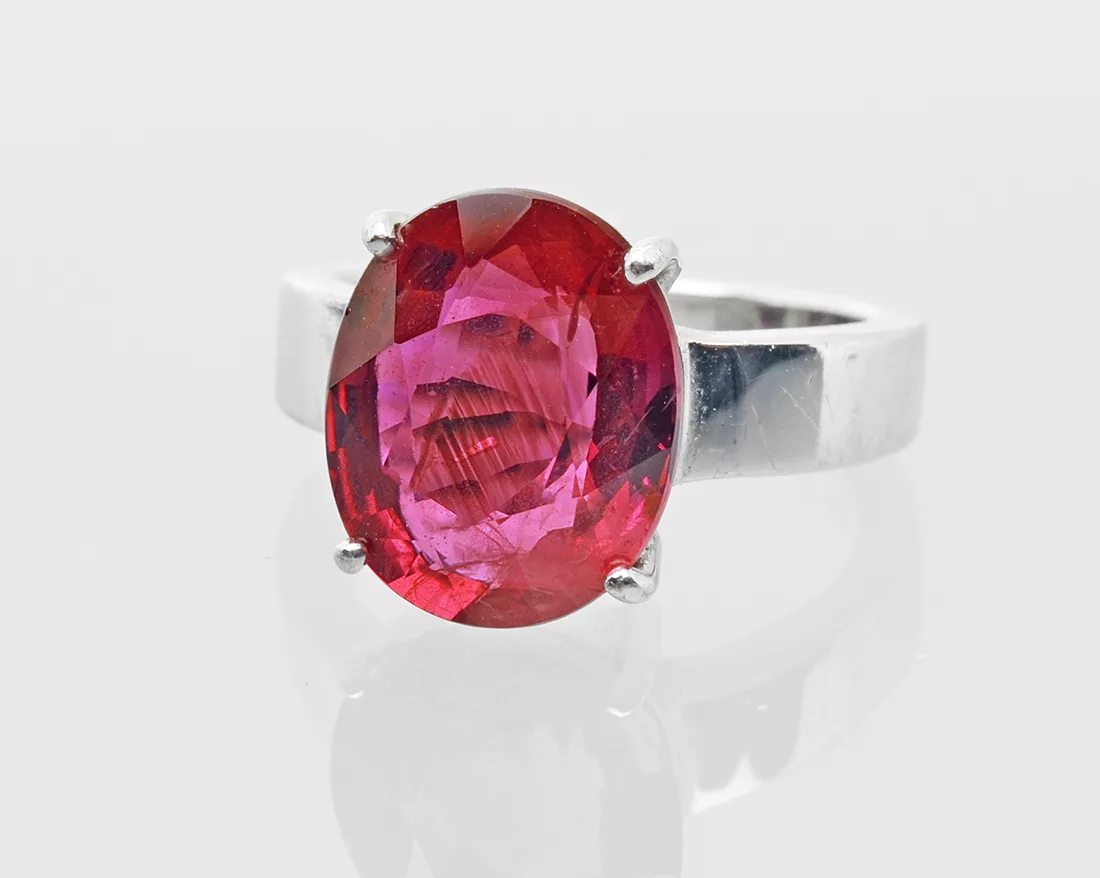Visit to the Mong Hsu ruby deposit in Myanmar (Burma)
Mong Hsu is one of the reputed ruby deposits in Myanmar (Burma). It is located about 250km southeast of Mogok, in the Shan State, in northeastern Myanmar.
Beware of synthetic ruby with ‘zircon-like’ cluster inclusions
Very recently, we tested a tricky case of a synthetic ruby (Figure 1) of 4.27 ct, submitted to SSEF as a natural stone accompanied by two lab reports confirming its natural origin. Under the microscope, the submitted stone showed ‘zircon-like’ cluster inclusions (Figure 2). They were somehow reminiscent of
Dyed corundum from Burma
by Dr. M.S. Krzemnicki, first published in Facette 27 (June 2021) It cannot be repeated often enough: any gemstone which contains fissures is prone to be treated with fissure filling substances, either by using a colourless or coloured substances (e.g. oil). Even when the stone comes from a famed mini
Heated ruby from Mong Hsu (Myanmar) with blue zone
Rubies from Mong Hsu, located about 250 km southeast of the Mogok Stone Tract, entered the gem trade in the early 1990s. Since this time the Mong Hsu mines remain an important source for Burmese rubies, specifically for stones of smaller sizes (2 ct and below).
Update on unheated Mozambique rubies
by Dr. M.S. Krzemnicki, first published in Facette 26 (May 2020) In the past decade, rubies from Montepuez in the Cabo Delgado province of northeast Mozambique have been the most significant source of gem-quality rubies in the market. These include iconic stones such as the Rhino ruby (22.04 ct), the Scarl
Low-Temperature Heated Rubies From Mozambique
by Dr. Michael S. Krzemnicki, first published in Facette 22 (February 2016) Heating of rubies from Mozambique at rather low temperatures is nothing new. Immediately after the discovery of this new deposit close to Montepuez in 2009, it was obvious that part of the new material required heat treatment befor
Vanadium-rich Ruby from Mogok, Myanmar
Mogok-type rubies are known to contain small but distinct amounts of vanadium (often in the range of 0.015 – 0.025 wt% V2O3), but are commonly highly dominated by chromium (approximately by a factor of 20-100 x) responsible for their often attractive and saturated red colour and strong fluorescence. In some c
Age Dating on Ruby set in Iconic Ruby Necklace by Harry Winston
by Dr. M. S. Krzemnicki & Dr. H.A.O. Wang, first published in Facette 25 (February 2019) Harry Winston was certainly one of the most important and influential jewellers of the 20th century. The son of a small jewellery shop owner, Mr. Winston was fascinated by gems and jewels already at a young ag
Didy Rubies
by Dr. M.S. Krzemnicki, first published in Facette 21 (February 2014) Since 2012, a new gem find near Didy (Madagscar) has produced some sapphires and rubies of outstanding size and quality (Pardieu et al. 2012, Peretti and Hahn 2012). This material originates from a remote area in the jungle south of the
The Challenge: Identification of a Ramaura Synthetic Ruby
by Dr. Michael S. Krzemnicki, first published in Facette 22 (February 2016) Similar to fashion trends, gemmological issues challenging gem-testing laboratories have changed over time. In the 1980s, synthetic coloured stones threatened the trade. But since the early 1990s, the challenge has switched to trea









